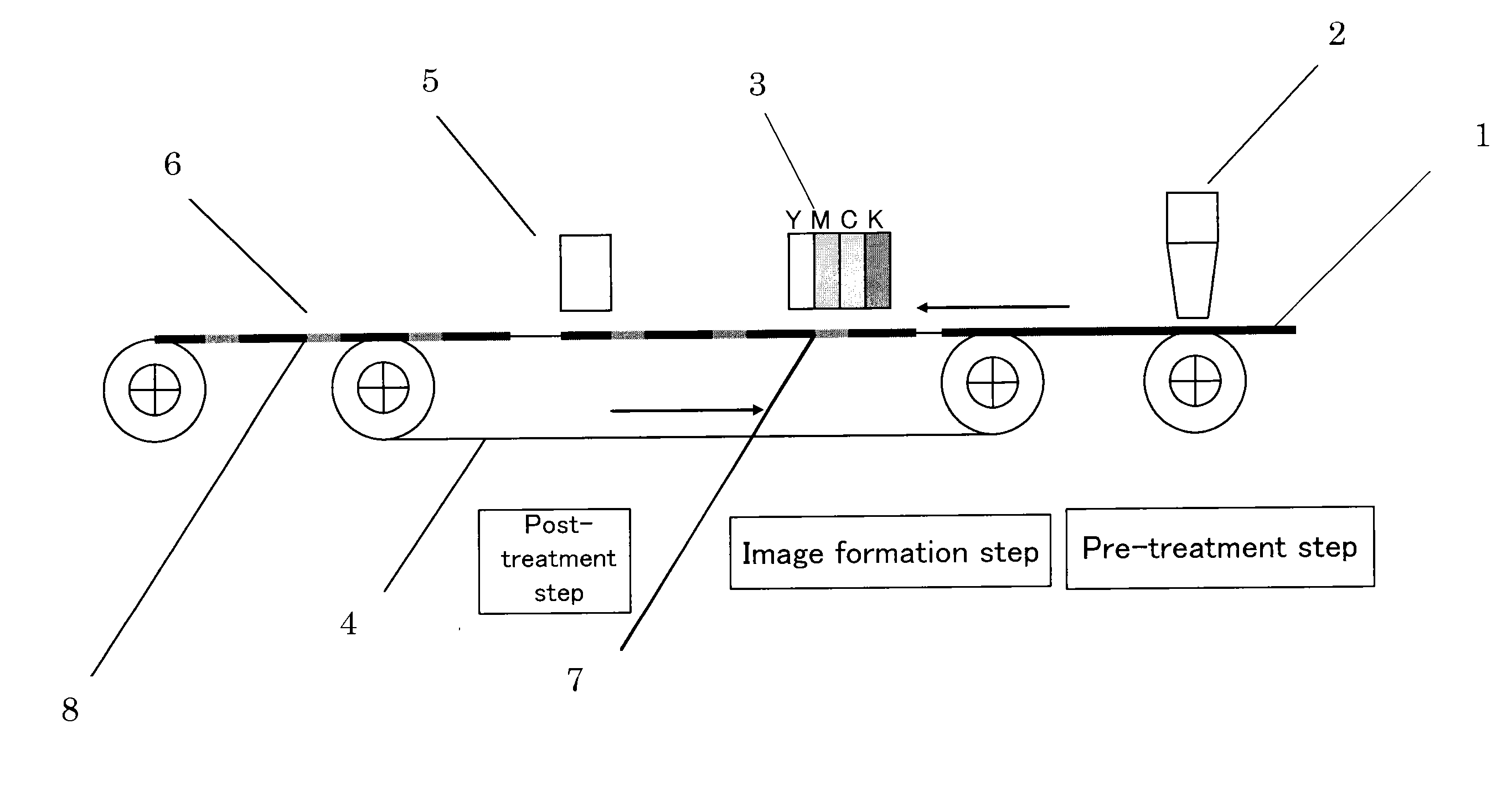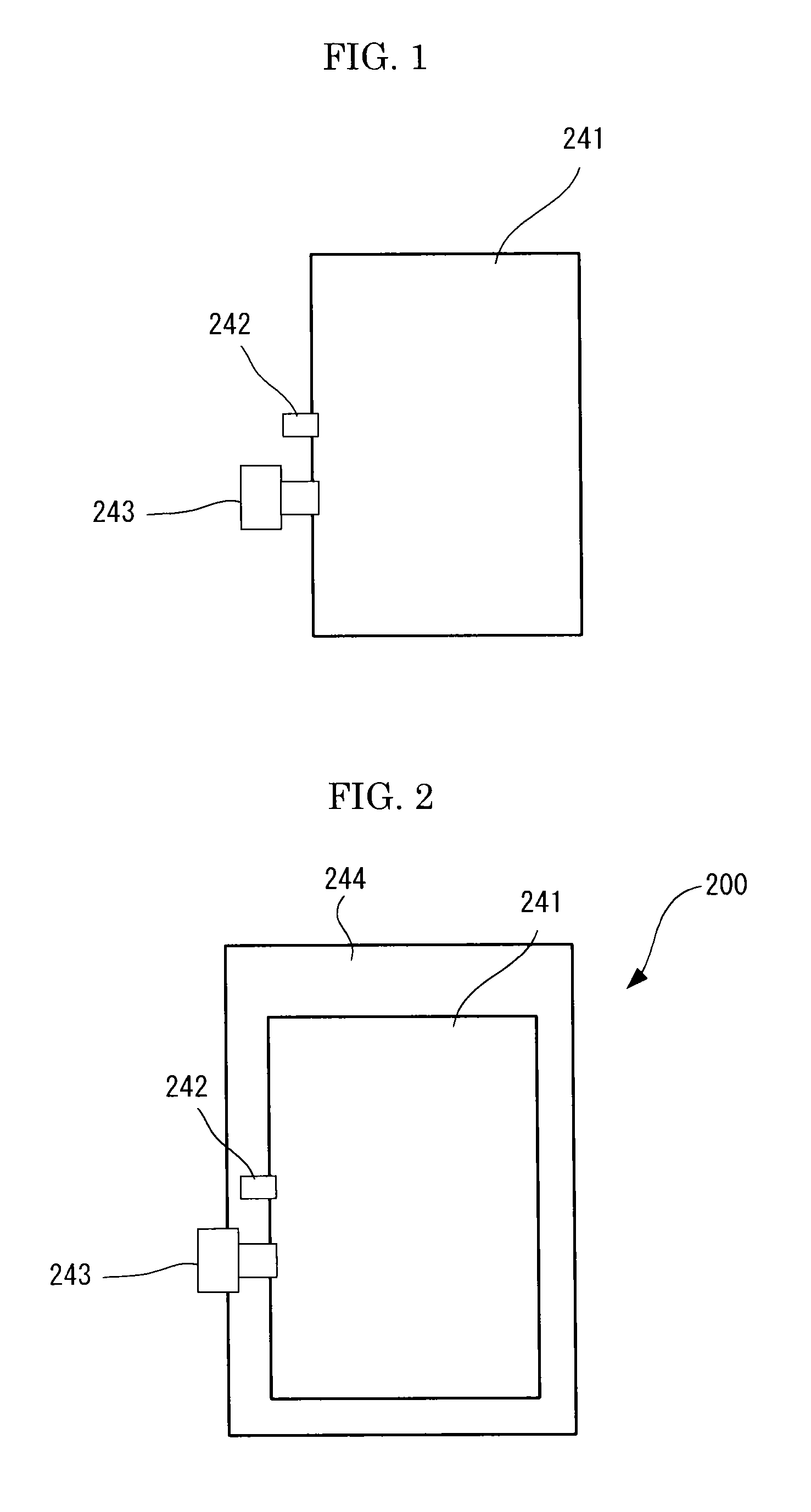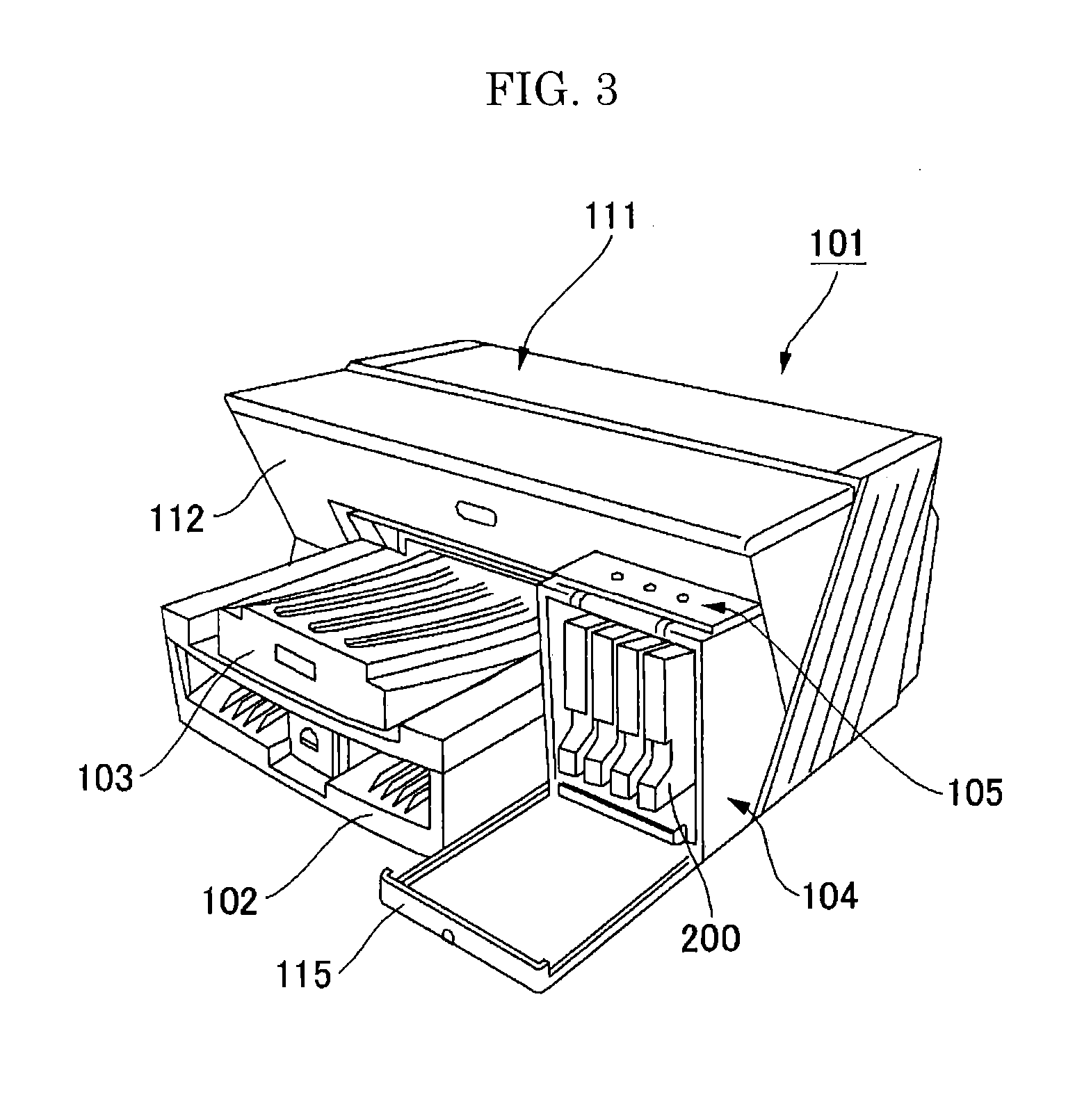Inkjet recording method and inkjet recording device
a recording method and inkjet technology, applied in the direction of inks, duplicating/marking methods, coatings, etc., can solve the problems of image blurring, paper type not suitable for inkjet recording at all, and significant reduction in image quality, etc., to achieve excellent drying performance of ink, high speed, and high quality full-color recording
- Summary
- Abstract
- Description
- Claims
- Application Information
AI Technical Summary
Benefits of technology
Problems solved by technology
Method used
Image
Examples
second embodiment
(2) In the second embodiment, the colorant is a pigment dispersion liquid containing a pigment, a pigment dispersing agent, and a high molecular is dispersion stabilizer, where the high molecular dispersion stabilizer is at least one selected from the group consisting of α-olefin-maleic anhydride copolymer, styrene-(meth)acryl copolymer, a water-soluble urethane resin, and a water-soluble polyester resin.
third embodiment
(3) In the third embodiment, the colorant contains pigment-containing polymer particles, in each of which a pigment is contained in a polymer particle.
[0112]As for the pigment, an organic pigment, or an inorganic pigment can be used. The colorant may contain a dye in order to adjust a color tone, as long as it does not deteriorate weather resistance of a resulting ink.
[0113]Examples of the inorganic pigment include titanium oxide, iron oxide, calcium carbonate, barium sulfate, aluminum hydroxide, barium yellow, cadmium red, chrome yellow, and carbon black. Among them, the carbon black is particularly preferable. Examples of the carbon black include those produced by the conventional methods such as a contact method, furnace method and thermal method.
[0114]Examples of the organic pigment include an azo pigment, polycyclic pigment, dye chelate, nitro pigment, nitroso pigment, and aniline black. Among them, the azo pigment, and polycyclic pigment are more preferable.
[0115]Examples of t...
first embodiment
Another Embodiment in First Embodiment
[0136]As for another embodiment within the first embodiment, preferred is a modified pigment, which is modified with a geminal bisphosphonic acid group, or a geminal bisphosphonate group.
[0137]Examples of such the modified pigment include modified pigments, which have been modified with any of the groups represented by the following structural formulae (i), (ii), (iii) and (iv).
[0138]In the structural formula (iii), X+ is Li+, K+, Na+, NH4+, N(CH3)4+, N(C2H5)4+, N(C3H7)4+ or N(C4H9)4+.
[0139]In the structural formula (Iv), X+ is Li+, K+, Na+, NH4+, N(CH3)4+, N(C2H5)4+, N(C3H7)4+ or N(C4H9)4+.
[0140]The surface modification will be specifically explained next.
[0141]The dispersion containing the modified pigment is prepared by means of one of the following general methods. The method is preferably a method, in which the compound represented by the following structural formula (IV) or the compound represented by the following structural formula (V) a...
PUM
| Property | Measurement | Unit |
|---|---|---|
| contact time | aaaaa | aaaaa |
| temperature | aaaaa | aaaaa |
| dynamic surface tension | aaaaa | aaaaa |
Abstract
Description
Claims
Application Information
 Login to View More
Login to View More - R&D
- Intellectual Property
- Life Sciences
- Materials
- Tech Scout
- Unparalleled Data Quality
- Higher Quality Content
- 60% Fewer Hallucinations
Browse by: Latest US Patents, China's latest patents, Technical Efficacy Thesaurus, Application Domain, Technology Topic, Popular Technical Reports.
© 2025 PatSnap. All rights reserved.Legal|Privacy policy|Modern Slavery Act Transparency Statement|Sitemap|About US| Contact US: help@patsnap.com



